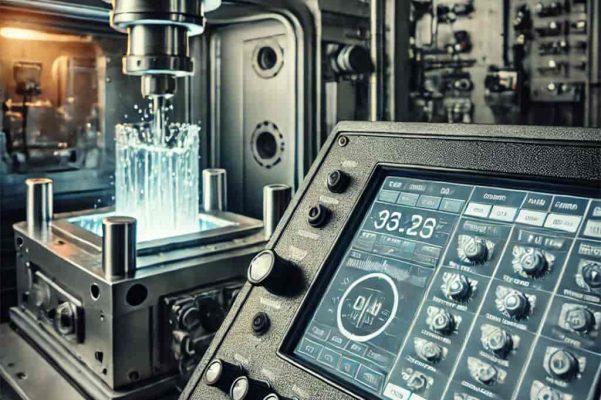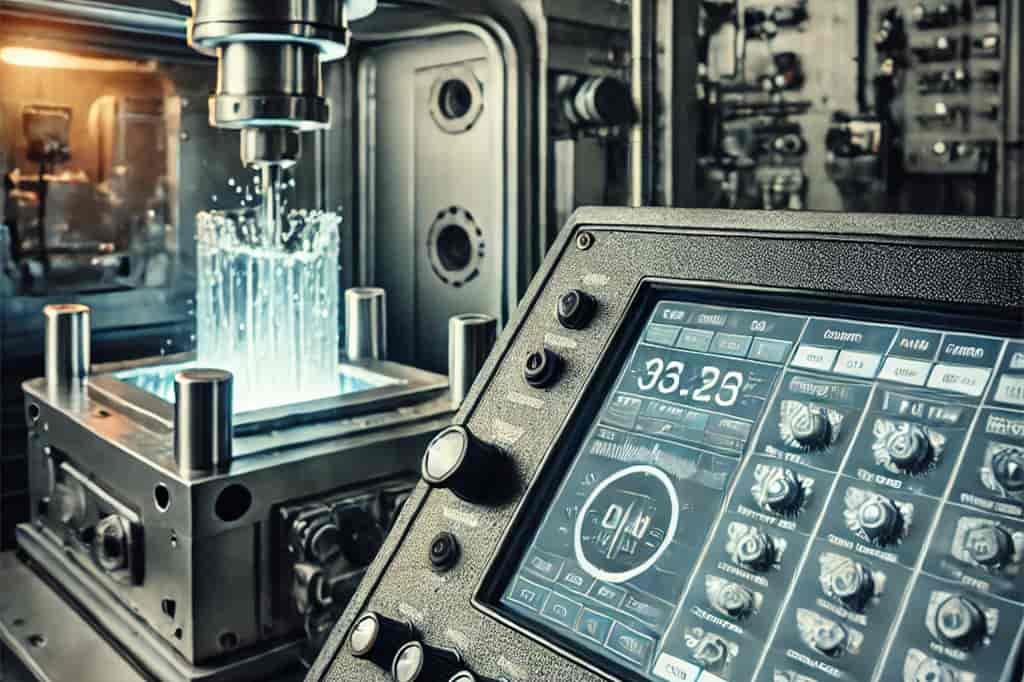The electrical connector is the unsung hero of every electronic device, from the smartphone in your pocket to the industrial machinery driving production lines. These small yet vital components ensure reliable signal transmission, making their precision and durability absolutely critical. At Konnra, we rely on injection molding to achieve this level of quality, allowing us to create connectors that meet the highest standards of performance. This blog explores how injection molding is applied in the manufacturing of electrical connectors, the specific industry demands it addresses, real-world examples, and the future trends shaping this essential process. Whether you’re aiming to enhance your products or simply curious about the technology behind the scenes, Konnra is here to provide valuable insights into how we help make it all happen.

1. Overview of Injection Molding Process
Injection molding is a versatile manufacturing process that has revolutionized the production of small, complex parts across various industries, including electrical connectors.
1.1 Basic Principles of Injection Molding
At its core, injection molding involves injecting molten plastic into a mold cavity. The plastic cools and solidifies to take the shape of the mold, which is then ejected as a finished part. This process is ideal for mass production, as it allows for high precision, repeatability, and the ability to produce parts with complex geometries.
1.2 Core Parameters of Injection Molding
Several key parameters govern the injection molding process. These include:
Injection Pressure and Speed: These control how the molten plastic fills the mold, impacting the final part’s quality and consistency.
Temperature Control: Both the temperature of the molten plastic and the mold itself must be carefully regulated to ensure proper flow and solidification.
Cooling Time: Sufficient cooling is critical to prevent warping or deformities in the finished product.
1.3 Materials Used in Injection Molding
In electrical connector manufacturing, the choice of material is critical. Commonly used thermoplastics include PBT (Polybutylene Terephthalate), PA (Polyamide), and LCP (Liquid Crystal Polymer). These materials are selected for their excellent electrical insulation properties, heat resistance, and durability, making them ideal for high-performance connectors.
2. Requirements of Injection Molding in Connector Manufacturing
Manufacturing electrical connectors presents unique challenges that demand precision, reliability, and efficiency from the injection molding process.
2.1 Precision and Miniaturization
As technology advances, electronic devices are becoming smaller and more powerful. This trend drives the need for miniaturized connectors with extremely tight tolerances. Injection molding must produce components that are not only small but also highly precise, with tolerances measured in microns. This precision ensures that connectors fit perfectly and function reliably, even in the most compact devices.
2.2 Material Performance Requirements
Electrical connectors must endure harsh conditions, including high temperatures, mechanical stress, and exposure to various chemicals. The materials used in injection molding must, therefore, provide exceptional performance under these conditions. For example, PBT and PA are known for their strength and stability, while LCP offers low moisture absorption and excellent dimensional stability, making it suitable for high-temperature environments.
2.3 Mass Production Needs
Given the vast number of electrical connectors required globally, the ability to produce these components on a large scale is essential. Injection molding is well-suited for this task due to its high production speed and repeatability. This efficiency is particularly crucial in regions like China, where the demand for electrical connectors is driven by a booming electronics industry. China Connector Corporation is one such entity leveraging injection molding to meet both domestic and international demands efficiently.
3. Case Studies of Injection Molding in Connector Manufacturing
The versatility of injection molding allows it to be used in manufacturing a wide range of electrical connectors, each with its specific requirements.
3.1 Pin Header Connectors
Pin header connectors are widely used in various electronic devices for connecting circuit boards. These connectors require precise pin alignment and robust construction to ensure reliable connections. Injection molding allows manufacturers to produce pin headers with consistent quality, ensuring that each pin is correctly positioned and securely embedded in the plastic housing.
3.2 Terminal Blocks
Terminal blocks are essential in industrial applications where secure and reliable connections are a must. The challenge in molding terminal blocks lies in achieving perfect alignment and ensuring that each terminal is securely fixed within the block. Injection molding provides the precision needed to manufacture terminal blocks that meet these rigorous standards, ensuring safe and effective connections in industrial settings.
3.3 Automotive Connectors
Automotive connectors are subject to extreme conditions, including high temperatures, vibrations, and exposure to chemicals. Injection molding is crucial in producing connectors that can withstand these harsh environments. Materials like PBT and PA are commonly used due to their resistance to heat and mechanical stress, ensuring that automotive connectors remain reliable throughout the vehicle’s lifespan.
3.4 Custom Connector Solutions
In some cases, off-the-shelf connectors do not meet the specific needs of an application. Injection molding enables the production of custom connector solutions tailored to unique requirements. This flexibility is particularly valuable in industries such as aerospace and medical devices, where specialized connectors are often needed.
4. Advantages and Challenges of Injection Molding in Connector Manufacturing
Injection molding offers numerous advantages in connector manufacturing, but it also comes with its own set of challenges.
4.1 Advantages
Precision Manufacturing: Injection molding allows for the production of highly accurate and consistent parts, essential for the reliable functioning of electrical connectors.
Cost Efficiency: The process is highly efficient, particularly in large-scale production, where the cost per unit decreases significantly.
Design Flexibility: Injection molding supports the creation of complex geometries and integrated features, enabling innovative connector designs that can meet specific requirements.
4.2 Challenges
Tooling Costs and Design Complexity: The initial investment in mold design and tooling can be high, particularly for complex or customized connectors. This requires careful planning and consideration to ensure cost-effectiveness.
Material Handling and Processing: High-performance materials used in electrical connectors, such as LCP, can be challenging to process. Proper material handling and precise control over process parameters are essential to avoid defects.
Environmental Concerns: The injection molding process, particularly in large-scale operations, can be resource-intensive. Addressing waste management and reducing energy consumption are ongoing challenges, especially as the industry moves towards more sustainable practices.
5. Future Trends in Injection Molding for Connector Manufacturing
The future of injection molding in electrical connector manufacturing is poised to be shaped by several exciting trends.
5.1 Integration of Smart Manufacturing
The rise of smart manufacturing technologies, including automation, AI, and IoT, is transforming the injection molding industry. These technologies enable real-time monitoring and optimization of the molding process, leading to increased efficiency, reduced waste, and higher product quality. China Connector Corporation is at the forefront of adopting these technologies, enhancing its production capabilities and staying competitive in the global market.
5.2 Advances in Materials Science
The development of new materials is opening up new possibilities for connector manufacturing. High-performance plastics with improved properties, such as enhanced heat resistance or electrical conductivity, are being developed. Additionally, there is a growing focus on sustainable materials, including bioplastics and recycled polymers, which can help reduce the environmental impact of production.
5.3 Innovation in Mold Design and Process Technology
As injection molding technology continues to evolve, innovations such as multi-shot molding and micro-injection molding are becoming more common. These techniques allow for the creation of even more complex parts and enable the integration of multiple materials or functions into a single connector, further expanding the design possibilities.
5.4 Environmental Sustainability
Sustainability is increasingly becoming a priority in manufacturing, and injection molding is no exception. Efforts to reduce the carbon footprint of the molding process include using energy-efficient machines, recycling scrap materials, and exploring eco-friendly alternatives to traditional plastics. As regulations around the world become more stringent, companies that adopt sustainable practices will be better positioned for long-term success.
Conclusion
Injection molding is essential to the production of electrical connectors, providing the precision, efficiency, and adaptability required to keep pace with today’s fast-evolving technology landscape. As the industry grows, particularly in key regions like China, where companies like China Connector Corporation are setting new standards, the future of connector manufacturing is brighter than ever. By adopting smart manufacturing technologies, exploring innovative materials, and prioritizing sustainability, the industry is well-equipped to tackle the challenges and seize the opportunities ahead.
If you’re interested in learning more about how high-quality connectors and wire harnesses are made, or if you’re looking for solutions to enhance your own products, we invite you to visit our Konnra website. Discover how we can help you stay ahead in this rapidly changing industry!










